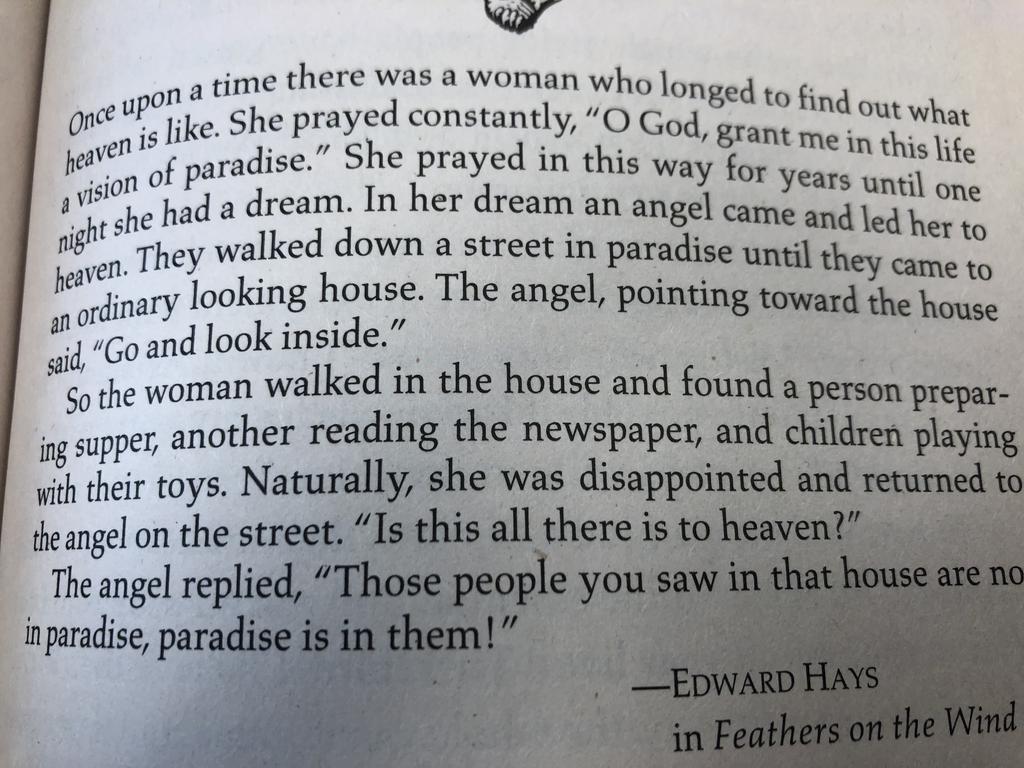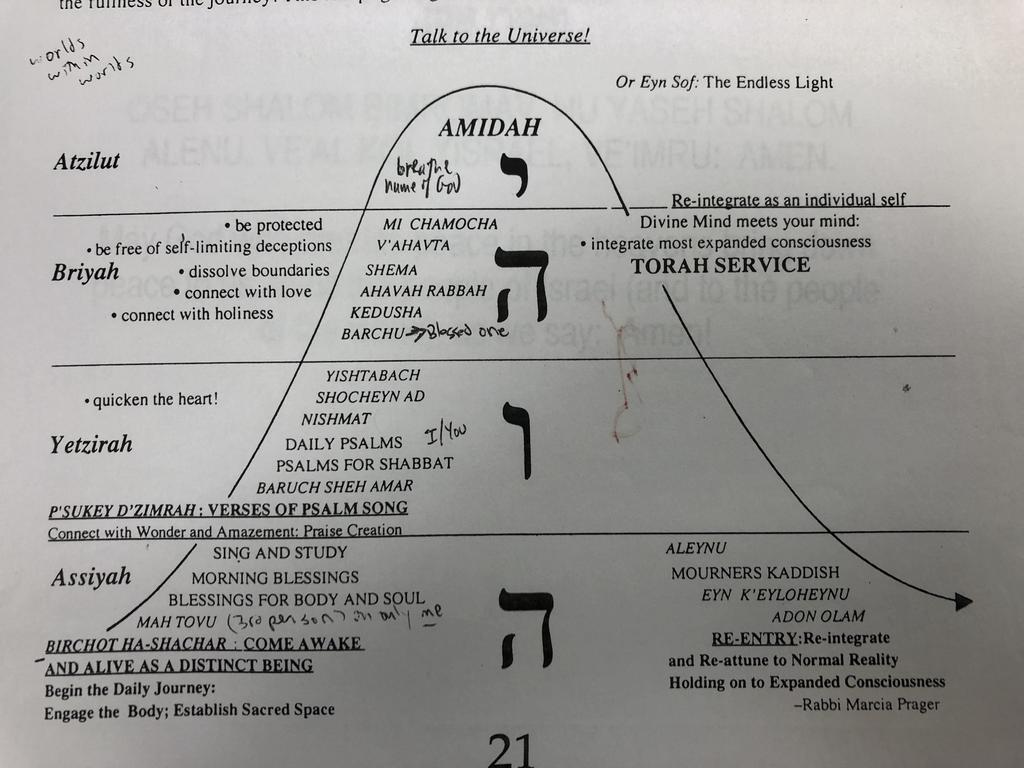
Citation: Spiritual Literacy, Frederic & Mary Ann Brussat, Simon & Schuster, 1996, p. 443

Tefillah chart by Rabbi Marcia Prager
By the time we've come to pray the Amidah, we've woken up our bodies, opened up our hearts, activated our intellect, and so we're (at least in theory!) fully-functioning, our senses and mind heightened, and as ready as we can be for communion with the Holy One.
The challenge at each stage is to see each prayer, that informs each stage with spiritual progress, as an uplifting push toward closeness to God, toward confronting the mysteries of ourselves and the universe. (As opposed to a checklist of prayers we say....
HOWEVER...our life situation and state of mind do not always cooperate! The spiritual progression of the morning service may not always happen. We may get stuck in our body, in our heart, in our mind - and when that happens, we can stay with it, breathe, be gentle with ourselves and do what we can...it may be in those moments we prefer to listen instead of pray out loud, or to recite along with the community to feel a part of it and supported by the voices and presence of other people.
Let's take a look at the architecture of the weekday morning Amidah
*The First two blessings of the Amidah are always the same at any service throughout the year, the 3rd blessing changes on Shabbat & holidays, the middle blessings change between weekdays and Shabbat and holidays, the final 3 blessings are the same themes in every Amidah but the peace blessing changes based on time of day and weekday vs. Shabbat/holiday
Let's take a look at the architecture of the Amidah (Bring up separate PDF)
The first 3 blessings:
- #1 and #2, God's Presence past, present, and future
- #3 - We cannot "see" God but we have access to kedushah, to holiness, to recognizing it and filling the earth with holiness - We join together with the angels, one foot, lifting ourselves up...
They had the figures of human beings. (6) However, each had four faces, and each of them had four wings; (7) the legs of each were [fused into] a single rigid leg, and the feet of each were like a single calf’s hoof; and their sparkle was like the luster of burnished bronze. (8) They had human hands below their wings. The four of them had their faces and their wings on their four sides. (9) Each one’s wings touched those of the other. They did not turn when they moved; each could move in the direction of any of its faces. (10) Each of them had a human face [at the front]; each of the four had the face of a lion on the right; each of the four had the face of an ox on the left; and each of the four had the face of an eagle [at the back]. (11) Such were their faces. As for their wings, they were separated: above, each had two touching those of the others, while the other two covered its body. (12) And each could move in the direction of any of its faces; they went wherever the spirit impelled them to go, without turning when they moved.
- Middle blessings - prayers of request
- The service started with body and proceeded to intellect, the Amidah begins with intellect and concludes with body - what's the reason for this?
- "Prosperity" is the last of the request prayers
- Blessing 12 could be against 'heretics' but our version is against 'malshinim' enemies of our people (within or outside the tribe), ends with hopes for the future
The goal of the Amidah (of the whole prayer service) is transformation - personal, communal, world...
"Transformation: is gift, not achievement, existential, not aesthetic, is self-fulfillment, not exchange of self" - Brother David Steindl-Rast A Listening Heart Crossroad Publishing 1999, p. 39.
When we pray the Amidah we're hoping for a moment of connection, gift of connection, and we want to experience our lives in a new way through God's lens, and at that moment we are fully ourselves - all elements brought together from the feet to head, from heart to mind.
So let's work now on transforming the words and meaning-centers of the Amidah into sparks of connection - I have a Guided Imagery Amidah by R. Marcia Prager - it's a Shabbat Amidah (Booklet, p. 83)



